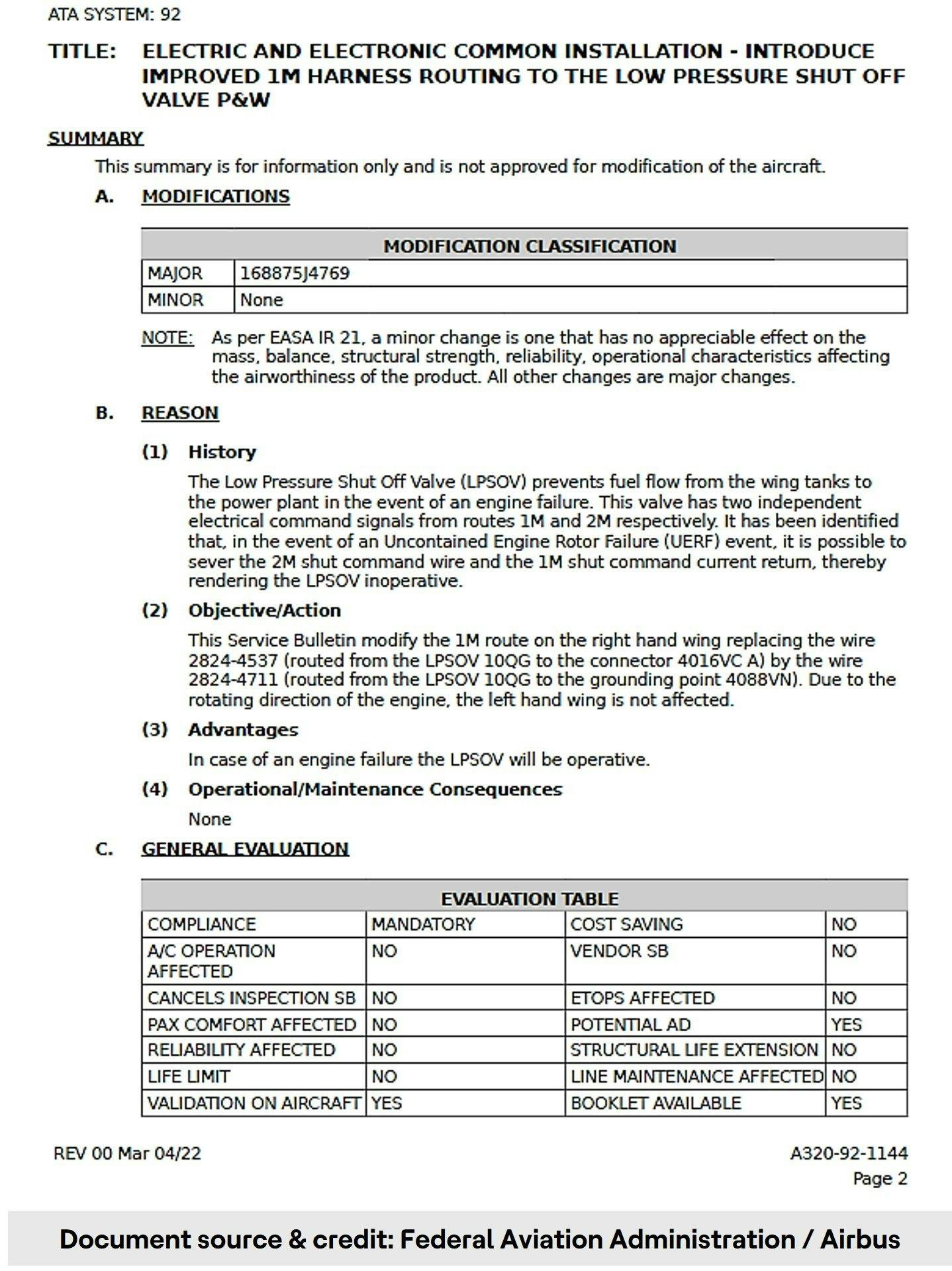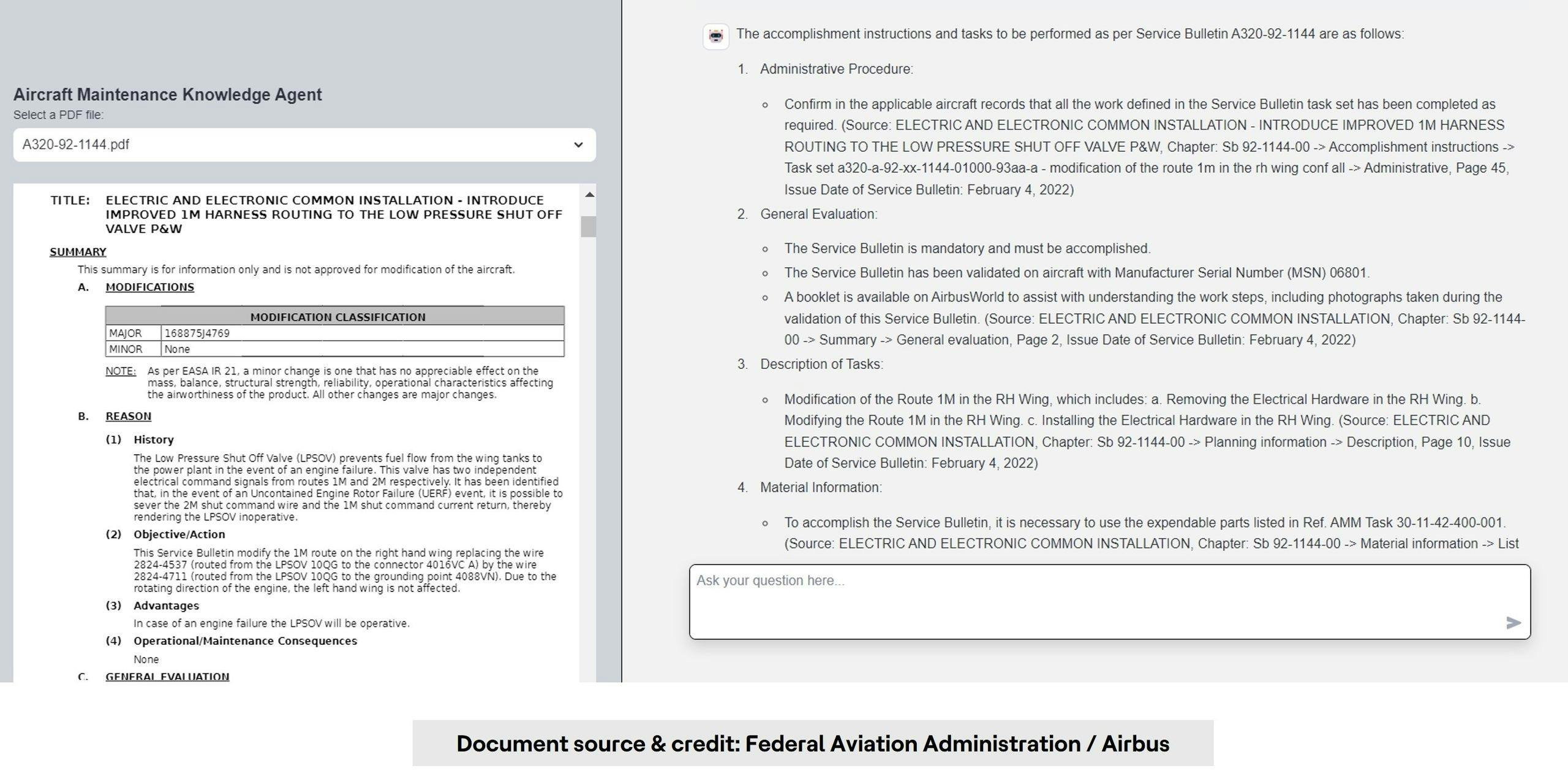The use of AI technologies has led to significant improvements in commercial aerospace and defense, with applications covering the entire spectrum of the A&D industry value chain, including procurement, engineering, manufacturing, supply chain and aftermarket. As AI keeps developing, the industry will further exploit its potential to foster innovation, increase operational efficiency and improve safety and security. From an aftermarket perspective, aircraft maintenance, repair and overhaul (MRO) activities are important in ensuring that aircraft operate safely and efficiently.
Aircraft maintenance documents, such as service bulletins and airworthiness directives issued by manufacturers/regulatory authorities, play a crucial role in guiding these maintenance activities. These documents provide essential instructions for maintaining, repairing or modifying aircraft systems. However, the complexity and technicality of these bulletins present significant challenges for maintenance personnel to consume the information.
- Not all service bulletins may be relevant to a specific aircraft fleet or maintenance operation, requiring personnel to review large volumes of information to identify pertinent updates.
- Service bulletins often contain highly technical language and detailed procedures, which can be challenging to understand, especially for less experienced personnel.
- Currently, much of the process of consuming service bulletins involves manual reading, interpretation and dissemination of information, leading to potential errors and delays.
The primary users of service bulletins are aircraft maintenance personnel, including mechanics, engineers and aircraft technicians, and these bulletins are crucial for ensuring the continued airworthiness of aircraft and compliance with regulatory requirements. Service bulletins are typically distributed through various channels, including email notifications, manufacturer websites, regulatory authority databases and subscription services. Maintenance personnel must actively monitor and track these bulletins to ensure their aircraft fleet complies with the latest maintenance requirements and safety standards. Below is a typical service bulletin associated with a unique modification number.

Pioneering solutions for industry challenges: The Aircraft Maintenance Knowledge Agent

Developed as a pilot by HCLTech AI & Cloud Native Labs, the Aircraft Maintenance Knowledge Agent utilizes GenAI to offer a pioneering solution tailored to streamline the complex process of managing aircraft maintenance documents. The aircraft maintenance knowledge agent is a conversational chat assistant that can effectively parse and interpret the technical content of service bulletins, providing simplified summaries, key points and actionable insights in plain language to enhance comprehension. The service bulletin documents are pre-processed using GenAI technologies to extract metadata and organize the information efficiently. Our solution integrates seamlessly with existing maintenance management systems and applications such as HCLTech iMRO/4, which has earned Premium Qualification for SAP Solution Extensions on the SAP S/4HANA 2023 version. As a result, it delivers automated updates and alerts directly within the workflow of maintenance personnel, significantly reducing the need for manual tracking and dissemination of information.
The GenAI application employs an efficient design that utilizes multiple Large Language Models (LLMs) of various sizes, each selected for specific tasks such as classification, reasoning, planning and summarization. By implementing advanced GenAI architecture patterns like Retrieval Augmented Generation (RAG), the solution effectively minimizes hallucinations and ensures transparent references and citations to the service bulletin documents. Integration among multiple tools, data sources and action endpoints is facilitated using the LLM Agent pattern, which leverages large language models' reasoning and structured output capabilities to create a dynamic and extendable architecture.
Azure infrastructure

Application usage
Let’s look at some examples of relevant questions that maintenance personnel can ask our knowledge agent. For instance, we can ask the agent to show the service bulletins associated with the A320 aircraft model. The agent will then list all the relevant bulletins for the A320 aircraft fleet, each identified by its unique modification number.

Next, based on relevance and usage for maintenance personnel, we can select a particular service bulletin and ask the agent to summarize the complete history or specific objectives or accomplishment instructions.

Some service bulletins also contain information related to parts or materials replacement, which may require placing new orders. We can ask our knowledge agent about the parts or materials that need to be ordered.
By automating the extraction, analysis and dissemination of service bulletin information, GenAI empowers maintenance personnel to perform their tasks more efficiently, ensuring a seamless workflow in the maintenance process.
Conclusion
The integration of GenAI into analyzing and managing aircraft maintenance documents, particularly service bulletins, marks a transformative shift in the MRO industry. This technology promises to address many of the persistent challenges faced by maintenance personnel, thereby enhancing the overall safety, efficiency and reliability of aircraft operations. The continuous learning and improvement capabilities of generative AI further contribute to their value as it can learn from user interactions and feedback, continuously refining their performance in summarizing, interpreting and providing recommendations.
In today's technology-driven landscape, robust, AI-powered solutions to complex business challenges are more critical than ever. HCLTech is at the forefront of developing innovative solutions that drive operational efficiency and business growth. We invite enterprises keen to harness the transformative power of AI to partner with us. Together, we can transform processes and achieve significant advancements in strategic objectives. Join us in shaping the future of business innovation and converting potential into exceptional outcomes.
HCLTech AI & Cloud Native Labs develop industry-specific solutions leveraging the power of GenAI to offer personalized and data-driven experiences to enterprises, improve decision-making processes and drive business growth. The HCLTech AI & Cloud Native Labs are located in London; East Brunswick, NJ and Santa Clara, CA in the US; and Noida, India. https://www.hcltech.com/cloud/ai-and-cloud-native-labs





